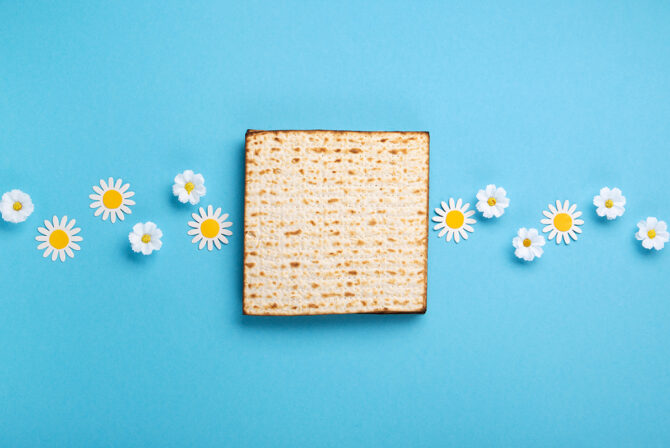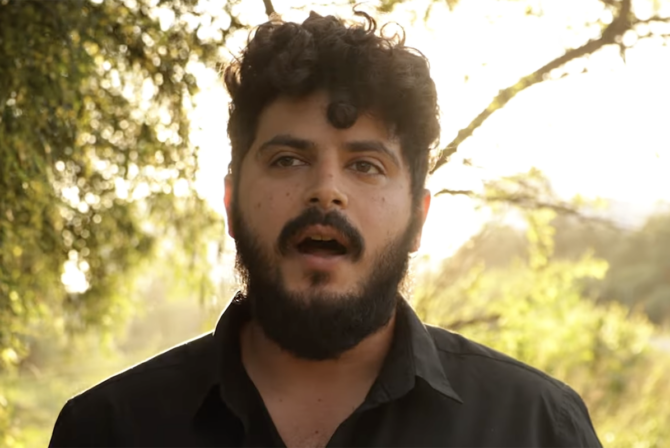From the outside, it might seem as if we set out to dismantle Passover seders one stalwart tradition at a time.
However, when I think back, Passover and seders have always had iconoclastic twists, although early on I wasn’t aware there was anything questionable about ours; we just had seder in this particular way, with this particular group of folks. For me, seder was always a woman-run affair; my mother and her good friend, Flora, did a second night seder together all through growing up and into adulthood (and often still). Around the time Flora lost her husband, my mother got divorced; both had young children and decided to team up for Passover. Infamously, Flora’s father-in-law (I think, I’m in apocryphal territory here) was an initial naysayer to the idea. Essentially, his objection went like this: girls cannot take the seder helm.
This was the 70s. Sisterhood was powerful (still is).
Those seders traded location; one year at Flora’s house, one year at ours (same basic neighborhood). While our two immediate families were constants, others came most years or some years or occasional years; that group, “others,” consisted of extended family and friends (heavy on the solo moms with kids when I was growing up). The sensation, despite the shifting cast, was constant; it was warm and welcoming. The message was really if you want to come, please join us.
Despite the stress of jamming around tables or making enough food or craning necks over shared haggadahs, the more the merrier was in full expression and I think if there’s one thing I really understood about the way Passover (and for me, by extension, holidays) worked was that you’d be better off including people than having anyone be lonely. Take in those on an exodus, an odyssey, or a journey!
One year, taking into consideration babies, nap times, and those who had to return to work early the next day, we proposed a change in the age-old Flora-and-Liz seder: brunch. As in, why not have seder early? The idea was that we’d be able to hit the road to maximize small people’s sleep (and be back for preschool and work the next day). The previous year’s seder had bumped up against grandchildren in need of bed and thus a great deal of crankiness. This seemed worth a try.
It worked splendidly. No one hit the late day witching hour death spiral of hunger or implacable fatigue (children and parents alike). The meal was easier to prepare, lighter–and you could really make better use of eggs at brunch, though we were more interested in four cups of coffee than four glasses of wine. As a result, people were more attentive. Clean up was smoother. Win-win.
I mentioned this to a friend who happens to be a rabbi’s wife and she looked a tad bit scandalized. And the fact that we host the seder at brunch is the least of it. Over the years, spins on tradition have included vegetarian food, which somehow evolved into miso soup with matzoh balls and homespun sushi (a house specialty).
One year, while doing a seder with our besties we started to open the haggadahs on the table when the children–elementary and middle school age at the time–revolted. “We don’t want to go through the whole thing again!” they cried. The four adults locked amused eyes and shrugged. One of us broke the silence: “Well, tell us what Passover is all about, then.”
What ensued was a discussion about freedom and hope and bad luck and Miriam and why the Middle East is so fraught politically. We felt as if we’d completely captured the spirit of Passover in a way that allowed us to feel satisfied that we’d fulfilled our Jewish duties and more so that we’d shared a meaningful Passover experience with our kids.
To bring religious traditions into a family’s life–especially, perhaps, for generally non-observant people–or at least my family’s life, can be a balancing act between a more rigid notion of the way things are done and a more fluid one of how we might find meaning. I aim for enough content that my kids understand the stories and the traditions and how they all fit together with larger belief system. That’s because I want my kids to have learned enough about Judaism to feel they can question or believe or learn more–or all three. And I want them to feel fondness for their family’s holiday celebrations. So even without a formal seder, we still hid the afikomen! There are some traditions you just can’t change.
Want Kveller delivered straight to your inbox? Sign up for our newsletter today!







